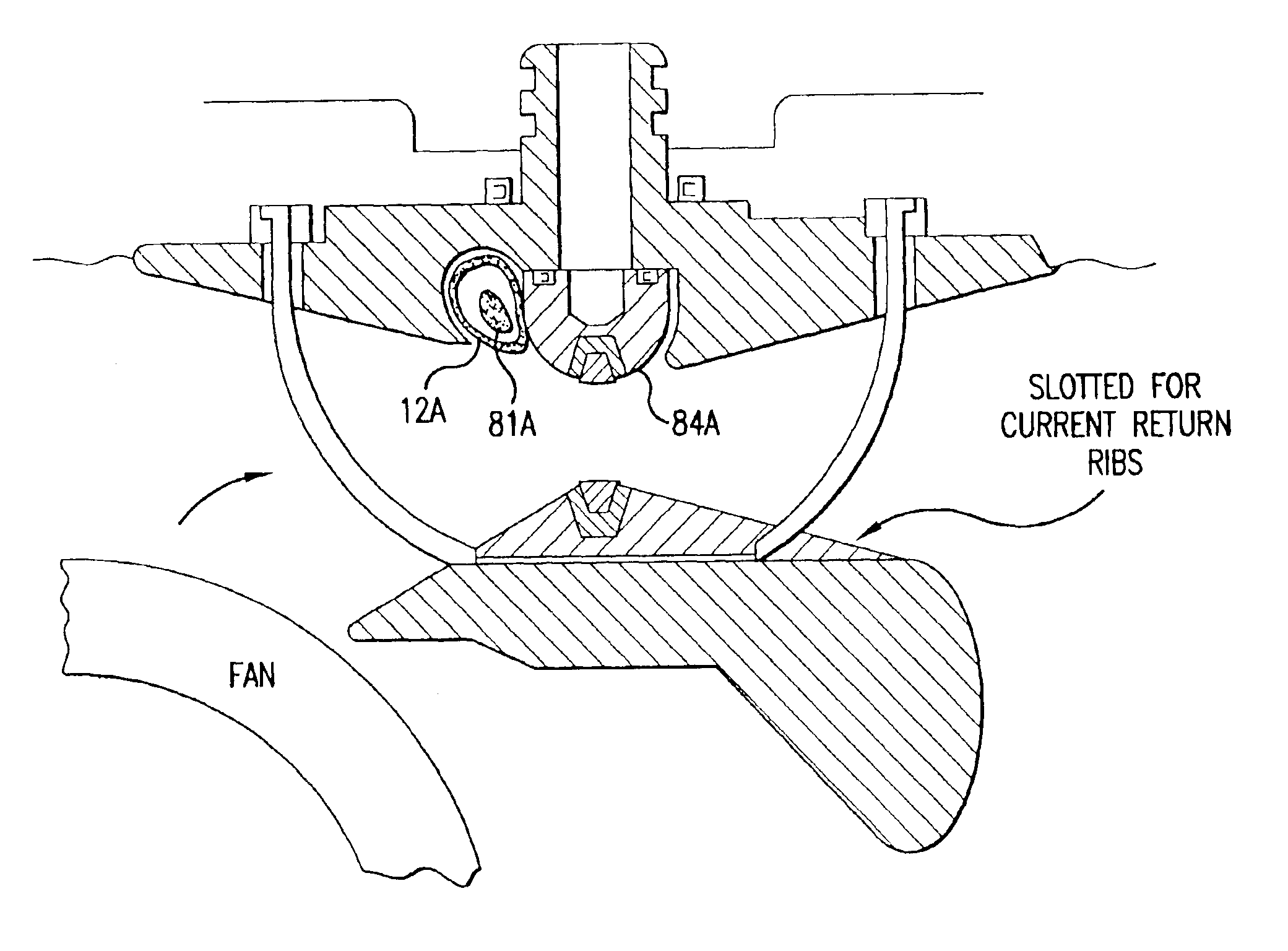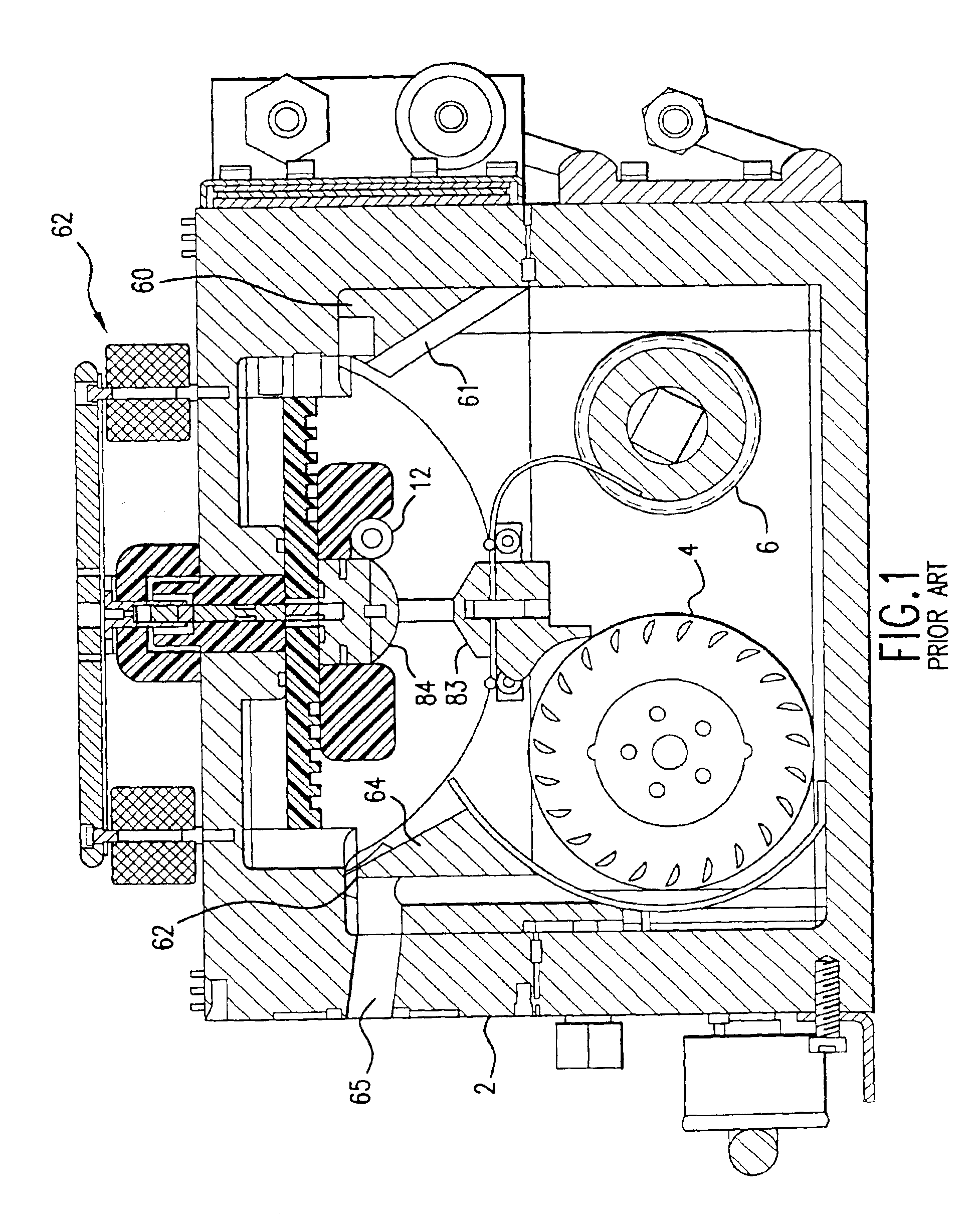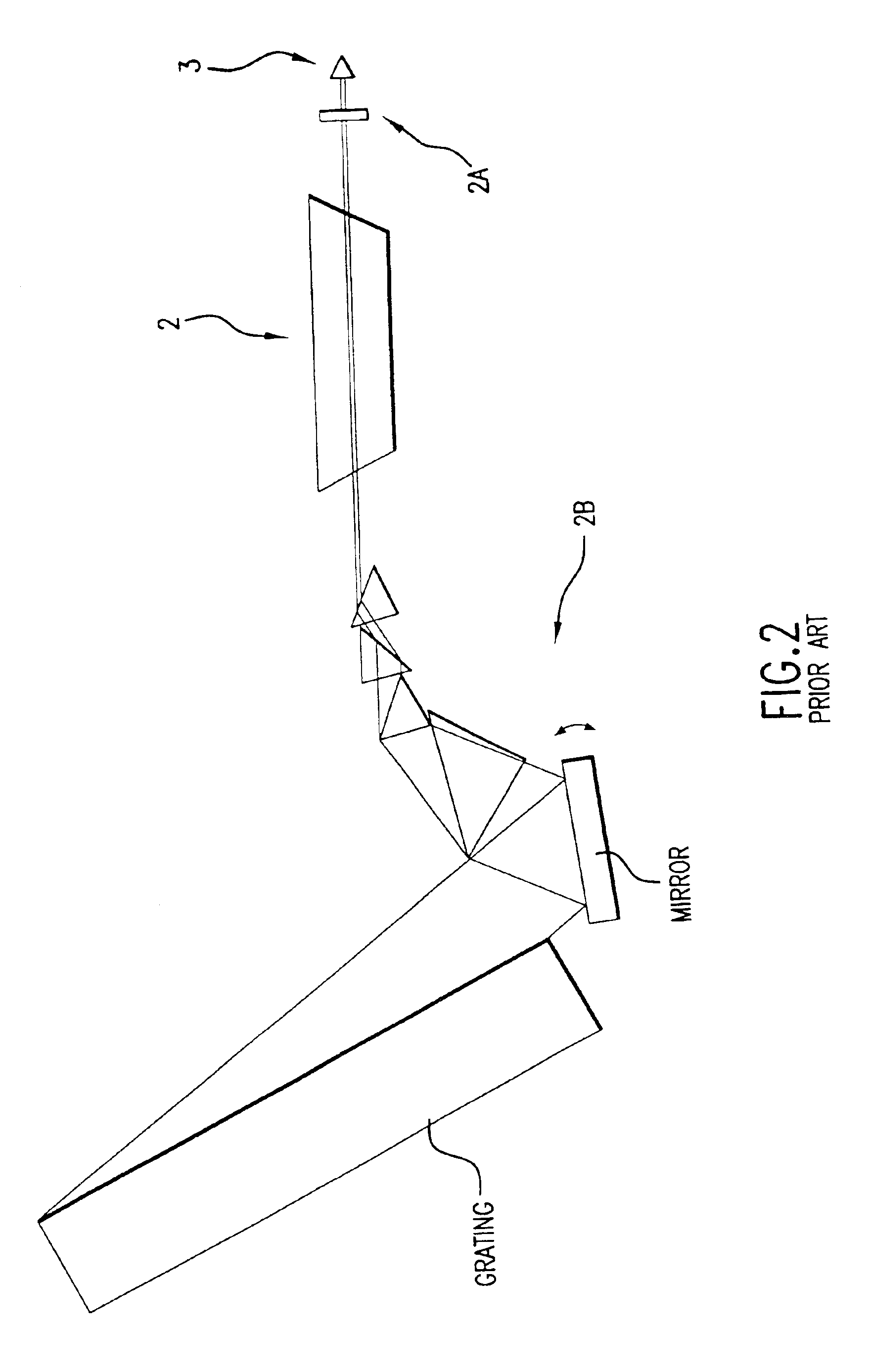High rep-rate laser with improved electrodes
a laser and electrode technology, applied in the field of high-reprate lasers with improved electrodes, can solve the problems of substantial limited fluorine ion sputtering on the metal surface of the anode, and achieve the effects of reducing the height of the anode, and reducing the number of fluorine ions
- Summary
- Abstract
- Description
- Claims
- Application Information
AI Technical Summary
Benefits of technology
Problems solved by technology
Method used
Image
Examples
first preferred embodiment
[0047]A first preferred embodiment of the present invention is a gas discharge laser such as KrF, ArF or F2 having an elongated anode with the cross section shown in FIG. 6. The anode is comprised of two types of brass, the main body 40 of the anode 83 in C26000 brass (having a lead content of less than 1%) which is 600 mm long. This anode is a modified version of a prior art anode which has been used extensively in these gas discharge lasers. The prior art 83 anode has a cross section as shown in FIG. 5. The width at the bottom is 1.2 inches. The height to the center tip is 0.380 inch. The tip has a radius of 0.5 inch. The shoulder height from the bottom surface is 0.13 inch. The slanted sides are flat planes at an angle of 27.67 degrees with the bottom surface. Applicants have proven with many laser-years of operation that this general anode shape produces excellent electric field properties and excellent discharge performance along with very good laser gas flow compatibility. In ...
second preferred embodiment
[0054]In a second-preferred embodiment of the present invention the anode is as described above and the cathode is similarly comprised of two materials, the first cathode material having a low cathode erosion rate positioned at the desired cathode discharge region and a second cathode material having a relatively higher cathode erosion rate positioned along two long sides of the first cathode material. Applicants have determined through several years of experimenting with brass electrodes that C36000 brass erodes about twice as fast as C26000 brass when used as cathode electrodes in fluorine containing gas discharge lasers. Cross sections of the cathode and anode in this embodiment are shown in FIGS. 7C and 7D respectively. This compares with the single material cathode and anode designs shown in FIGS. 7A and 7B which have been initialized previously in laser chambers designed and built by applicants and their fellow workers.
[0055]In the cathode the first material 90 located at the ...
PUM
 Login to View More
Login to View More Abstract
Description
Claims
Application Information
 Login to View More
Login to View More - R&D
- Intellectual Property
- Life Sciences
- Materials
- Tech Scout
- Unparalleled Data Quality
- Higher Quality Content
- 60% Fewer Hallucinations
Browse by: Latest US Patents, China's latest patents, Technical Efficacy Thesaurus, Application Domain, Technology Topic, Popular Technical Reports.
© 2025 PatSnap. All rights reserved.Legal|Privacy policy|Modern Slavery Act Transparency Statement|Sitemap|About US| Contact US: help@patsnap.com



